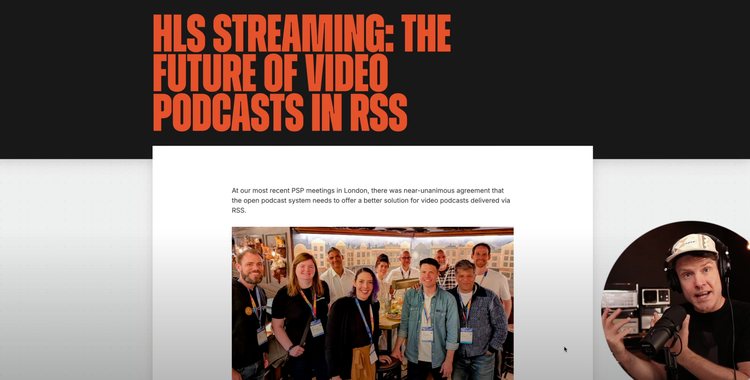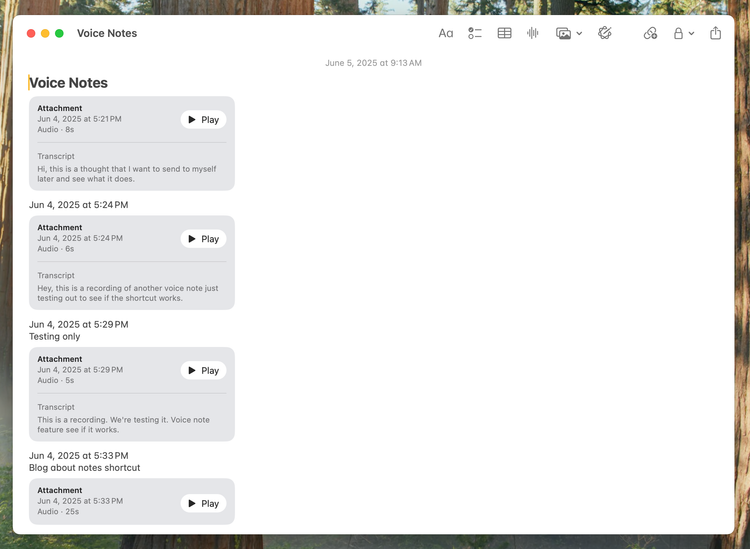Build a Super Powered Combiner Robot for the Web

Substack continues to build the walled garden around their Nazi playground. This time they've added a "feature" where you can charge for access to chats with you. From TechCrunch:
Substack is launching the ability for writers to paywall their entire Chat or specific threads to paid or founding members only, the company announced on Wednesday. The rollout of the new feature comes 18 months after Substack launched Chat as a way for writers to communicate directly with their loyal readers. The company believes paywalled Chats will help keep conversations intimate and free of trolls, while also acting as a paid perk for readers. Substack says its data shows that active Chat participants are 12% more likely to retain their subscriptions.
Expanding a bit on what I said on Threads, I really believe there's a great tech stack that you can use to publish all the types of content you want while owning your own domain. All three aren't necessarily perfect, but I feel like it's the best middle ground of ease of use, not having to manage plugins and software in order to publish, and most importantly to the Substack discussion: they're not going to continue to lock you in to what their vision for publishing looks like on the web.
The three main types of content I'm talking about are blog posts, email newsletters, and podcasting. I feel like the world has surrendered video posting to YouTube (long form) and TikTok / Reels for on mobile. Your mileage may vary, but I consider a blog / email newsletter / podcast to be the modern communication stack for the web.
And I like using a service dedicated to a specific task, even if that means having a few different services in my web toolbox. A podcast host isn't going to build a great newsletter service, just like a blog host isn't going to build as great a podcasting platform.
Blog
Ghost - $9/month
Having your own blog to write your thoughts out on that you can express in your own way (lots of color! big fonts! small fonts! accessible reading! not generic river of text on a twitter wall!) is such a great way to learn to write, learn how to collect different content sources, and learn how to put yourself out into the web. Share an opinion. Share an original (to you) thought. And have it originate from your domain that you registered. I'm old fashioned (and old), but I still think it's so much cooler that you can register "mysupercoolblogaboutsoup.com" and write something, throw some pictures in, and then anyone in the world can type that address into a browser and see it.
I've lived in WordPress land for most of my career—my business site is still run on it—but the interface has gotten so busy and confusing for the average person who just wants to write. That's why I've loved switching over to Ghost. In addition to being able to just blog easily, they do have a newsletter feature built in that you can use if you want to replicate the Substack experience without the Nazi's.
But I think you can use Ghost for your blog, and something else for your newsletter so that you're not tied to one company (or in WordPress / Automattic's case, one person's) view of how publishing on the internet should be handled.
Also: Ghost won't sell your data to AI machines. Automattic already has.
Honourable mention: Micro.blog is a great platform for posting online with a neat, algorithm free social media platform on the side. The longer form blog posting set up lacks the now standard writing interface that users are more used to in terms of laying out photos, embeds, etc. But if you just want to easily write text and publish it, I highly recommend Micro.blog.
Email Newsletter
Buttondown - Free for your first 100 subscribers, then $9/month
On a technical level, I don't love how Ghost optionally sends an email every time you write a blog post to people who subscribe to your blog. I like to have more control over that by batching it together in a weekly email so if I write 3 blog posts one day, subscribers don't get 3 different emails. (Ghost's founder, John O'Nolan, is aware of this as a possible issue.)
For that reason, and others, I love using Buttondown to manage my email newsletter writing. It's simple and focused on the idea of writing an email to send to subscribers.
Buttondown can run a paid newsletter on it's own as well if you want. But the most important feature is this paragraph on their privacy page:
Buttondown is different. As a bootstrapped business, I don’t need to engage with data on level. Your information is yours, and yours alone. Buttondown collects the standard bevy of email analytics: IP addresses, open and click events, client information. Buttondown sends that to absolutely nobody besides, well, you, the beloved customer. And if you want to completely opt out, you can.
Honourable mention: ConvertKit is another email newsletter platform I would trust, especially if you're needing to do a lot of A/B testing or segmenting of your subscriber list.
Podcasting
Transistor.fm - $19/month for unlimited podcasts
Podcasting is my life's work. I've been editing podcasts for clients for a decade, and been recording, editing, and publishing my own various podcast ideas for even longer. As a result, I've tried almost every podcast hosting platform that's come and gone. And nobody has nailed the simplicity in the user interface while maintaining power user level control over your podcast like Transistor has.
Publishing a podcast in Substack is a bad experience for everyone, most importantly your listeners.
Much like writing a blog or newsletter, if you have a podcast, the goal is to publish new episodes. Period. You don't want to have to dread using your podcast host's CMS, make sure your WordPress plugin is up to date, figure out where the RSS feed goes when you submit it to Apple Podcasts, etc. You're in the business of publishing new podcast episodes. And in my experience, Transistor does the best job of getting out of the way and letting you do that.
While Transistor's pricing might be higher than some other podcast hosts, the key is that they give you unlimited podcasts at that price. Once you do a podcast on one topic, you kind of want to start another one. And maybe abandon one for a while to start a third. But then come back to the first one. Each time you have an idea for a podcast, you don't want to have to think about whether it's worth $$/month to start it. Transistor has super generous download tiers. Unless you're a celebrity or have a massive following already, your podcast with your friends is not going to come anywhere near to 20,000 downloads per month. You could start 20 podcasts and not come close to hitting that limit.
Putting Them All Together

In the world of Transformers there's combiners—a super robot made up of multiple lesser robots—and that's what I imagine happening here. I don't want Ghost, Transistor, and Buttondown to merge in a legal sense. Separately they can each do what they're already great at. But by putting all three together in your tech stack they can be a super power.
An example workflow:
- Record a podcast episode in Transistor on a topic which gets published to all the various podcasting platforms automagically for you.
- Write a blog post in Ghost talking about the episode that includes an embed of your episode player.
- Once a week or month, write a newsletter in Buttondown to send out to your subscribers letting them know about whatever podcast episodes and blog posts you've written with links back to them.
In this set up, your podcast's home base is using your Transistor built website landing page that's already great at collecting episode details, where to subscribe, guest bios, etc.
Your newsletter's home base is using Buttondown's landing pages and archives, since that's what Buttondown is good at.
And your blog has it's own URLs and archiving, serving up an easily to subscribe RSS feed that anyone can read in RSS reader apps like Feedbin.
Using domain name magic, you can have them each at podcast.websitename.com and newsletter.websitename.com so it looks like it's all under one roof. You can give it all a Transformer inspired name like UltraMegaSmasher.com or SuperOptimusSpeedRunner.biz over at Cloudflare domains for $10/year.
Just Make Websites, Podcasts, or Newsletters!
I'm not sure why I have this bee in my content publishing bonnet, but I think it's because I want more people to have fun and nerdy super power of owning their own domain name and publishing their thoughts and opinions out into the world. Instead of mindlessly scrolling social media, take a risk and put yourself out there.
Like the intro of one of my client's podcasts that I'm supposed to be editing right now instead of writing a 1,600 word blog post: just build websites or podcasts or newsletters!
And then let me know where to subscribe!






Member discussion